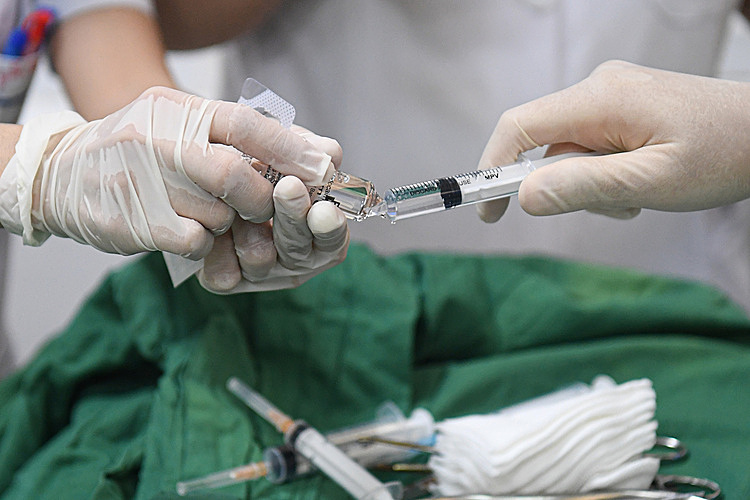On 16/9, the National Hospital of Tropical Diseases reported that the patient had previously been diagnosed with pneumonia at two lower-level medical facilities and treated with strong antibiotics, but showed no improvement. X-rays revealed lung damage and elevated inflammation markers. A pre-existing leg wound, sustained while working in a pigsty, further complicated the diagnosis, diverting attention from the true source of his illness.
Upon arrival at the intensive care unit of the National Hospital of Tropical Diseases, the patient was experiencing severe respiratory distress, blood clotting disorders, skin flushing, swelling around the eyes, and a critical drop in platelet count. A positive Rickettsia antibody test confirmed scrub typhus, but doctors initially couldn't find the characteristic eschar (tick bite lesion).
"Locating the eschar is crucial for effective diagnosis and treatment," a hospital representative stated.
After thorough examinations and consultations, specialists finally discovered the telltale eschar in the genital area, a sensitive location that made detection difficult. This discovery allowed doctors to make a definitive diagnosis and implement targeted treatment, leading to a rapid improvement in the patient's condition.
 |
Doctors treating the patient. Photo: *Hospital* |
Scrub typhus is an acute infectious disease caused by the bacterium *Orientia tsutsugamushi*. It can be fatal if not diagnosed and treated promptly. The disease can affect people of all ages, but is most common among working-age adults. It occurs sporadically throughout the year, primarily during hot and rainy seasons, and is not transmitted from person to person.
The *Rickettsia orientalis* bacteria is carried by chigger mites and some rodents, small mammals, mainly rats, birds, or less commonly in dogs, pigs, and chickens. It's transmitted to humans through the bite of infected chiggers (*Leptotrombidium*). Chiggers thrive in damp bushes, grass, rock crevices, and tree bases where rodents live. Therefore, people often contract scrub typhus while working in fields, camping under trees, during military exercises, on farms, or near streams, rivers, and forest edges. The incubation period is 6-21 days.
Symptoms of scrub typhus vary and can include fever, headache, body aches, an eschar at the bite site (a hallmark of the disease), rash, swollen lymph nodes, and damage to multiple organs, especially the lungs, heart, and liver. These symptoms can be easily mistaken for other illnesses, and there's no specific diagnostic test.
The eschar initially appears as a blister, which develops into an oval shape on a red base. After 4-5 days, the blister ruptures, forming a 0.5-2 cm lesion with a black scab. Once the scab falls off, a shallow, light pink ulcer remains. Because these ulcers are painless, they can easily be overlooked.
The lungs are commonly affected by scrub typhus, leading to pneumonia and pleural effusion, causing acute respiratory failure that may require mechanical ventilation. Liver damage, requiring continuous blood filtration and plasma exchange, is another common complication. Patients may also experience hypotension, myocarditis, encephalitis, and meningitis.
Doctors recommend wearing long-sleeved clothing, insect-repellent clothing, and applying insect repellent to exposed skin when venturing into fields, hills, or mountainous areas to prevent chigger bites. Avoid sitting, lying, drying clothes, or placing backpacks on grass, near bushes, or tree bases. Rodent control and insecticide use are also important preventative measures.
Thuy Quynh












